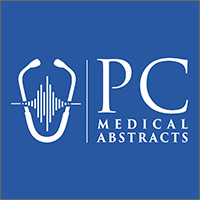User login
The video associated with this article is no longer available on this site. Please view all of our videos on the MDedge YouTube channel
Silverman, M., et al, Ann Intern Med 166(11):765, June 6, 2017
BACKGROUND: Overuse of antibiotics increases healthcare costs and contributes to the emergence of resistance, but these agents continue to be prescribed heavily for nonbacterial acute upper respiratory infections. Factors influencing physicians may include patient expectations, decision fatigue, fear of complications and unintended financial incentives.
METHODS: In this retrospective analysis of administrative healthcare data, the authors from the University of Western Ontario included 185,014 patients aged 66 or older (mean age 74.6 years) presenting to 8990 primary care physicians who were diagnosed with a first episode of nonbacterial acute upper respiratory infection that did not otherwise warrant antibiotic treatment. More than 90% of the episodes were managed by one physician and involved one visit. The primary outcome was antibiotic prescription within 30 days. Episode, patient and physician factors, in the context of antibiotic prescription, were evaluated.
RESULTS: Overall, 46.2% of the patients were prescribed antibiotics (broad-spectrum agents in 69.9% of these cases). Patients receiving an antibiotic prescription were more likely than those not prescribed an antibiotic to be diagnosed with acute bronchitis (45.3% vs. 19.3%) or acute sinusitis (17.1% vs. 10.6%). Patients were more likely to receive antibiotic prescriptions when physicians were mid- and late-career vs. early-career, trained outside of Canada or the United States, and seeing more than 25 patients per day. Broad-spectrum agents were more frequently prescribed by mid- and late-career physicians and those trained in Canada or the United States.
CONCLUSIONS: Almost one-half of these elderly patients with nonbacterial acute upper respiratory infections received unnecessary antibiotic prescriptions. This study sheds light on the prevalence and predictors of such prescribing. 58 references ([email protected] for reprints)
The video associated with this article is no longer available on this site. Please view all of our videos on the MDedge YouTube channel
Silverman, M., et al, Ann Intern Med 166(11):765, June 6, 2017
BACKGROUND: Overuse of antibiotics increases healthcare costs and contributes to the emergence of resistance, but these agents continue to be prescribed heavily for nonbacterial acute upper respiratory infections. Factors influencing physicians may include patient expectations, decision fatigue, fear of complications and unintended financial incentives.
METHODS: In this retrospective analysis of administrative healthcare data, the authors from the University of Western Ontario included 185,014 patients aged 66 or older (mean age 74.6 years) presenting to 8990 primary care physicians who were diagnosed with a first episode of nonbacterial acute upper respiratory infection that did not otherwise warrant antibiotic treatment. More than 90% of the episodes were managed by one physician and involved one visit. The primary outcome was antibiotic prescription within 30 days. Episode, patient and physician factors, in the context of antibiotic prescription, were evaluated.
RESULTS: Overall, 46.2% of the patients were prescribed antibiotics (broad-spectrum agents in 69.9% of these cases). Patients receiving an antibiotic prescription were more likely than those not prescribed an antibiotic to be diagnosed with acute bronchitis (45.3% vs. 19.3%) or acute sinusitis (17.1% vs. 10.6%). Patients were more likely to receive antibiotic prescriptions when physicians were mid- and late-career vs. early-career, trained outside of Canada or the United States, and seeing more than 25 patients per day. Broad-spectrum agents were more frequently prescribed by mid- and late-career physicians and those trained in Canada or the United States.
CONCLUSIONS: Almost one-half of these elderly patients with nonbacterial acute upper respiratory infections received unnecessary antibiotic prescriptions. This study sheds light on the prevalence and predictors of such prescribing. 58 references ([email protected] for reprints)
The video associated with this article is no longer available on this site. Please view all of our videos on the MDedge YouTube channel
Silverman, M., et al, Ann Intern Med 166(11):765, June 6, 2017
BACKGROUND: Overuse of antibiotics increases healthcare costs and contributes to the emergence of resistance, but these agents continue to be prescribed heavily for nonbacterial acute upper respiratory infections. Factors influencing physicians may include patient expectations, decision fatigue, fear of complications and unintended financial incentives.
METHODS: In this retrospective analysis of administrative healthcare data, the authors from the University of Western Ontario included 185,014 patients aged 66 or older (mean age 74.6 years) presenting to 8990 primary care physicians who were diagnosed with a first episode of nonbacterial acute upper respiratory infection that did not otherwise warrant antibiotic treatment. More than 90% of the episodes were managed by one physician and involved one visit. The primary outcome was antibiotic prescription within 30 days. Episode, patient and physician factors, in the context of antibiotic prescription, were evaluated.
RESULTS: Overall, 46.2% of the patients were prescribed antibiotics (broad-spectrum agents in 69.9% of these cases). Patients receiving an antibiotic prescription were more likely than those not prescribed an antibiotic to be diagnosed with acute bronchitis (45.3% vs. 19.3%) or acute sinusitis (17.1% vs. 10.6%). Patients were more likely to receive antibiotic prescriptions when physicians were mid- and late-career vs. early-career, trained outside of Canada or the United States, and seeing more than 25 patients per day. Broad-spectrum agents were more frequently prescribed by mid- and late-career physicians and those trained in Canada or the United States.
CONCLUSIONS: Almost one-half of these elderly patients with nonbacterial acute upper respiratory infections received unnecessary antibiotic prescriptions. This study sheds light on the prevalence and predictors of such prescribing. 58 references ([email protected] for reprints)
Learn more about the Primary Care Medical Abstracts and podcasts, for which you can earn up to 9 CME credits per month.
Copyright © The Center for Medical Education
